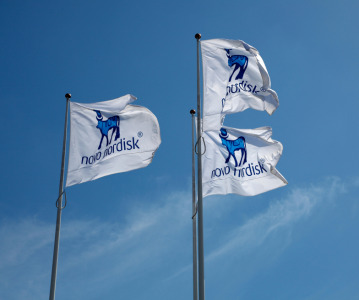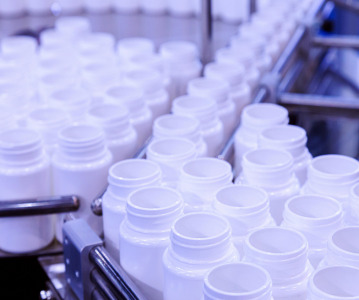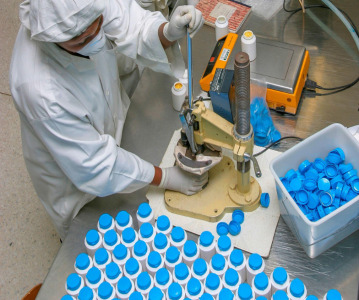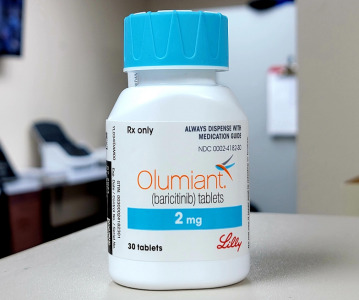Pipelines, Economics and IP: How Bioprocessing Tech Firms Assess Markets

Identifying areas of unmet need to guide R&D strategy and shape drug pipelines
Bioprocessing metrics
Epidemiology is a core skill for biopharmaceutical companies. Being able to identify an area of unmet medical need helps guide R&D strategy and, ultimately, is what shapes drug pipelines. It is also an important metric for bioprocessing technology suppliers. For such companies, disease monitoring is one of multiple factors used in sales forecasting and resource allocation.
Conor McKechnie, Chief Marketing Officer, GE Healthcare Life Sciences told us, “Modelling and predicting market demand for our current, planned and future products and services, is complex. “Given the subsequent business strategy and capital allocation decisions, GE Life Sciences uses a very broad and constantly evolving series of data sources.”
GE does not disclose specific details of how it monitors markets, however, McKechnie confirmed that epidemiology is taken into consideration along with a number of other factors.“These [GE’s market analysis metrics] include anything from macro socio-economic trends, disease epidemiology, national and transnational governmental investment strategies.”
He added that related metrics such as emerging areas of medical research as well as things venture capital activity, Government support for research and customer intelligence are also factored into decision making. “Combining this myriad of constantly changing data and insight with, most importantly, a very clear understanding of our customers’ needs helps us reach the best decisions for our customers and our business.”
Drug pipelines
Biopharmaceutical product pipelines are also an important consideration when assessing markets according to Karen Tiano, company spokesperson, at the Life Science business of Merck.
“We have a multi-step process. We look at the drug pipeline to understand what drugs are coming online, and we look at the commercial and development success — how they get to market, and once they get there, what the uptake is. At that point, we know roughly what the big molecules are.
She added that, “We have an internal model to figure out how much demand that actually means in terms of volume of drugs being manufactured. We then determine the specific demands for us for different types of products, whether it be consumables, instruments, systems or services in order to supply them.”
Looking at drug pipelines and products rather than clinical research is appropriate for the bioprocessing sector says Eric Langer, BioPlan Associates’ president and managing partner.
“Since single use systems (SUS) and bioprocessing devices are really not able to affect clinical outcomes – for example an RA biologic could be manufactured with the same equipment as a cancer therapeutic - these companies probably monitor the pipeline more than which clinical area is growing vs others.
He also told us that, “Monitoring pipeline could be an indication of future demand for alternative technologies. Similarly, biosimilars in the pipeline can be monitored, but these are more commercial decisions rather than directly bioprocessing-related.”
Intellectual property
Bioprocessing technology suppliers also take IP laws into consideration before deciding how they will approach a market according to Dr Ross Cummings, senior associate patent attorney at Gill, Jennings & Every LLP.
He told us, “The IP landscape is certainly something that any technology company looking to enter a market should be aware of. This can most obviously help avoid stepping on others’ toes by identifying others’ rights and assessing the risk of infringing such rights. “This can also be a useful exercise to assess the state of the art and identify potential competitors, partners and suppliers” Cummings said.
Keep pace with developments in Bioprocessing
Each year the CPHI brand unites more than 100,000 pharmaceutical professionals through exhibitions, conferences and online communities. If you're looking to meet the leading manufacturers and developers in the Bioprocessing space, learn the latest developments through quality conferences and access unparalleled networking opportunities we offer a portfolio of global exhibitions in all major pharma markets throughout the year - take a look at our event calendar for more information.
Related News
-
News Women in Pharma: Moving beyond discussions and into best practice at CPHI Milan
In this second CPHI Milan special of our monthly series, we cover the key takeaways from the Diversity & Wellbeing track held on October 10, 2024. -
News AstraZeneca invests in AI collaboration for cancer drug trials
The British-Swedish pharmaceutical giant is partnering with biotechnology firm Immunai Inc to increase the efficiency of some cancer drug trials. -
News Ozempic and Wegovy prices questioned as Novo Nordisk faces US Senate hearing
The CEO of Novo Nordisk was grilled during a US Senate committee hearing on September 24, 2024, in which the exorbitant prices of the Danish company’s blockbuster drugs Ozempic and Wegovy were called into question. -
News The BIOSECURE Act: implications for the pharma supply chain
On September 9, 2024, the US House of Representatives voted to pass the bill titled the BIOSECURE Act (the Act), which lists several Chinese companies in the pharmaceutical supply chain. The Act will prohibit American companies from contracting or doin... -
News On Track at CPHI Milan: Thermo Fisher Scientific Track Sponsor interview
With CPHI Milan just around the corner, we sat down with some of the sponsors for this year’s conference tracks to discuss the most pressing topics in pharma. -
News CPHI Milan Speaker Spotlight: Pharma Manufacturing and Localisation in Africa
In the run-up to CPHI Milan, we sit down with some of the experts and thought-leaders speaking at this year’s conferences. -
News US BIOSECURE Act passed by US House of Representatives
The controversial act, which has already impacted several foreign companies operating in the US, was passed by the House of Representatives on September 9, 2024. It is now headed for the US Senate before it can be signed into law by President Joe Biden... -
News Eli Lilly licenses rheumatoid arthritis manufacturing in Africa
American pharmaceutical company Eli Lilly has signed a partnership with Egyptian organisation Eva Pharma to localise manufacturing of rheumatoid arthritis treatments in Africa.
Position your company at the heart of the global Pharma industry with a CPHI Online membership
-
Your products and solutions visible to thousands of visitors within the largest Pharma marketplace
-
Generate high-quality, engaged leads for your business, all year round
-
Promote your business as the industry’s thought-leader by hosting your reports, brochures and videos within your profile
-
Your company’s profile boosted at all participating CPHI events
-
An easy-to-use platform with a detailed dashboard showing your leads and performance
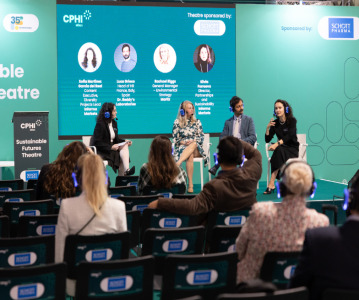
.png)
